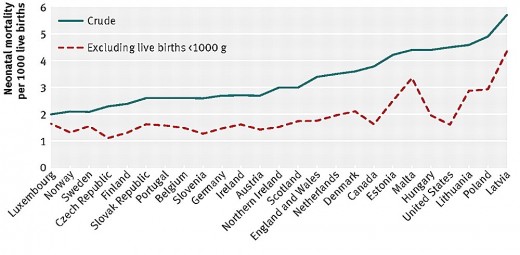What’s next Consumer Reports? An evaluation of the Prius by the oil industry? How about an exposition on lung cancer by the tobacco industry? Maybe a review of breast implants by the silicone manufacturers of America?
Any of those would be appropriate after the “evaluation” of modern obstetric practice by the natural childbirth industry.
The recent piece What to reject when you’re expecting was copied wholesale from the promotional literature of the multi-billion dollar natural childbirth industry whose primary product is doubt about modern obstetrics.
The piece is filled with mistruths, half truths and outright lies, but what else can you expect when you ask industry to write about the competition? Just about every word in the piece is factually false, with the possible exception of “and” and “the.”
Consumer Reports should be profoundly embarrassed, not merely because they repeated lies, but because of the “sources” they used.
Consider their “general resources”:
Baby Friendly USA – a lactivist group.
Centering Healthcare Institute-a group that promotes multiperson medical appointments .
Childbirth Connection – the premier lobbying organization for the natural childbirth industry.
Health4Mom – a consumer site.
March of Dimes- an organization struggling to maintain its relevance in a world where polio is being driven out of existence.
Notice anything missing? There’s nothing from OBSTETRICIANS. You remember them: the people who actually provide obstetric care.
And that’s why the piece is filled with misinformation. There are so many egregious errors that it is impossible to detail them all.
Consider the first paragraph:
Despite a health-care system that outspends those in the rest of the world, infants and mothers fare worse in the U.S. than in many other industrialized nations. The infant mortality rate in Canada is 25 percent lower than it is in the U.S.; the Japanese rate, more than 60 percent lower. According to the World Health Organization, America ranks behind 41 other countries in preventing mothers from dying during childbirth.
1. Infant mortality is the wrong statistic. It encompasses deaths from birth to one year of age and is a measure of pediatric care. According to the World Health Organization, perinatal mortality (late stillbirths+deaths from birth to 28 days) is the best measure of obstetric care, and according to the WHO, the US has one of the best perinatal mortality rates in the world. [Neonatal and Perinatal Mortality Country, Regional and Global Estimates, World Health Organization, 2006]
2. Inter country comparisons of infant and neonatal mortality are invalid because many countries exclude premature babies from their statistics. This is a deliberate attempt to artificially improve mortality statistics because the gullible, like the folks at Consumer Reports, aren’t even aware of the manipulation.
Here’s a handy chart that illustrates the manipulation:
The top line represents crude neonatal mortality rates ranked in rising order. The bottom line represents corrected rates. Note that after correction, instead of the US having the highest rate of neonatal mortality, it has one of the lowest rates. [Influence of definition based versus pragmatic birth registration on international comparisons of perinatal and infant mortality: population based retrospective study, BMJ 2012;344:e746]
3. Most of the purported “increase” in US maternal mortality is accounted for by expanding the definition of maternal deaths to include more conditions and a longer post deliver time period (up to a year). Those changes in definition occurred in 1999 and 2003. [Changes in Pregnancy Mortality Ascertainment: United States, 1999–2005, Obstetrics & Gynecology: July 2011, Volume 118, Issue 1, pp 104-110]
4. African descent is one of the biggest risk factors for infant/neonatal/perinatal mortality as well as maternal mortality. Most of the countries that do better than us on international rankings are “whiter.” Japan, for example, has the lowest proportion of women of African descent among the countries that purported rank higher than us in mortality statistics, while the US has the highest of any first world country.
In other words, the entire premise of the article, that the US outspends other countries but has poorer obstetric outcomes is flat out false. But that’s not surprising. The natural childbirth industry has been parroting this falsehood for years. What is surprising, and disappointing, is that Consumer Reports fell for a series of self-serving lies.




